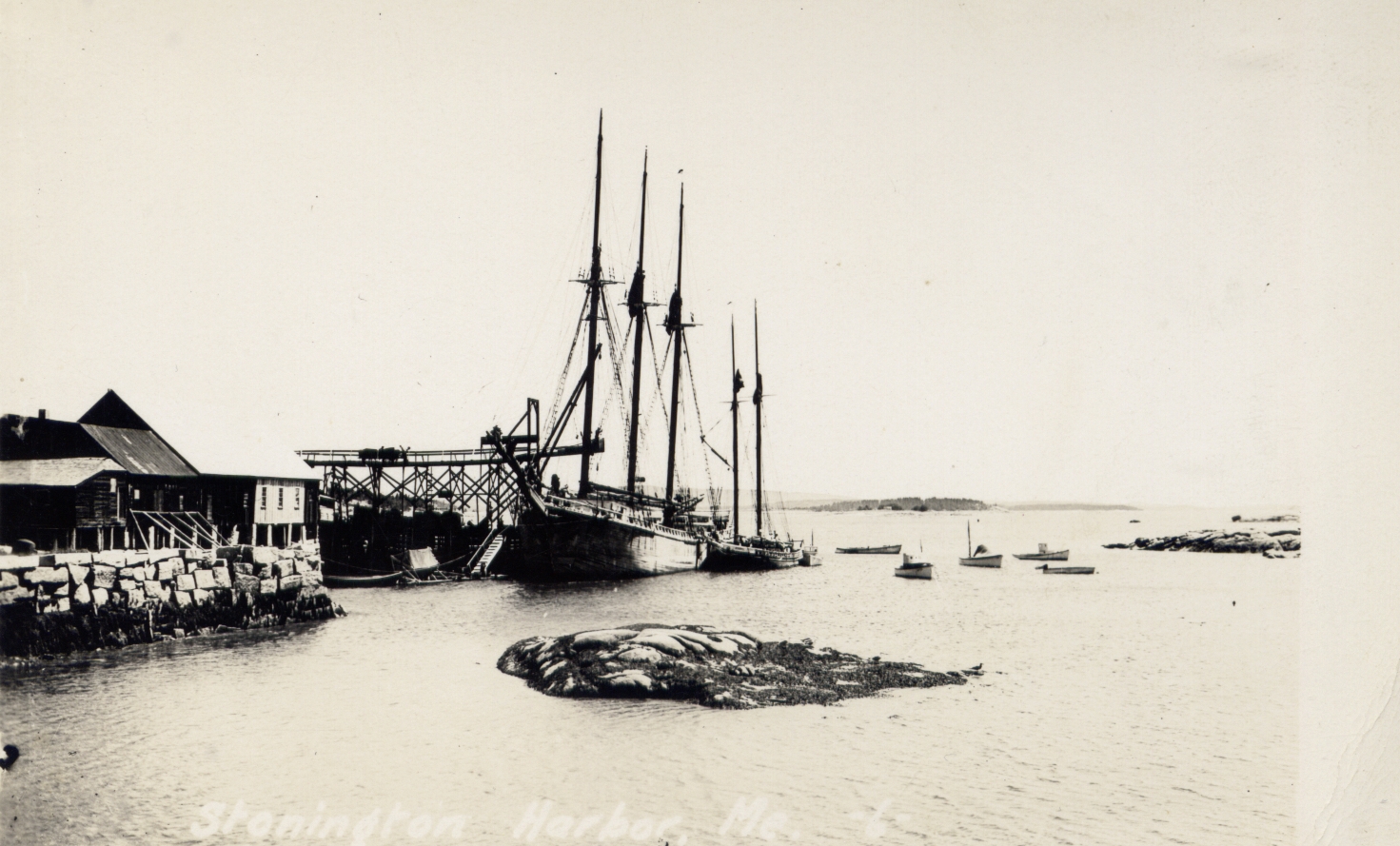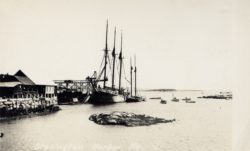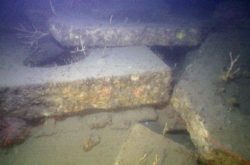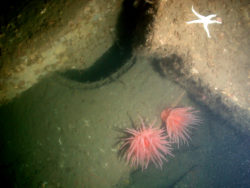
The Wreck of the Lamartine

Two and three-masted schooners with loaded granite cargos from the quarries in Stonington, Maine and Rockport, Massachusetts. Courtesy of Deborah Marx
Within the boundaries of Stellwagen Bank National Marine Sanctuary and nearly 300 feet beneath the ocean’s surface lies the Lamartine, a two-masted schooner that sank in a storm on May 17, 1893. Survey teams from NOAA discovered the shipwreck in 2004 and the University of Connecticut’s Northeast Underwater Research Technology and Education Center studied it using ROV technology between 2004 and 2006. Data collected during these surveys allowed maritime archaeologists to identify the shipwreck as the Lamartine. In 2012, the site received listing on the National Register of Historic Places.
The Lamartine was built in Camden, Maine for Captain George Washington Thorndike. The ship’s primary purpose was to transport goods – mainly granite, which was important during 19th and 20th century urban development – and it officially launched into the ocean from Maine’s Goose River in August of 1848. It was nearly 80 feet long, 22 feet wide, and had a holding area eight feet deep.
During its nearly 45 years on the water, the Lamartine traveled up and down America’s eastern seaboard, including to South Carolina, Louisiana, Florida, and even Cuba to retrieve timber and logwood. Interestingly, the Lamartine, was also rented out for other purposes. Most notably, a group of 16 treasure hunters from Maine commissioned the ship in November of 1852 for a voyage from New York City to Venezuela where they would attempt to salvage a Spanish warship, the San Pedro del Alcantara. The group succeeded and brought gold, silver, and other artifacts left behind back to Maine in July of 1853.
On May 15, 1893, the Lamartine departed for what would be its final voyage to New York City from Stonington, Maine with a goal of delivering granite sewer catch-basin heads. The voyage was managed by Captain Eben W. Eaton, his brother and first mate, Jeremiah W. Eaton, and a cook and deckhand, Myron Powers. Two days into the voyage, rough seas caused by a storm shifted the ship’s heavy cargo and caused it to capsize. The Eaton brothers were able to escape, floating in the water and holding onto the overturned ship until a fishing schooner, the Edith M. McInnis, saw their distress signal and came to the rescue. Myron Powers did not survive the incident. The Lamartine is a great link to the past, representing New England’s granite trade and its integral role in urban development from that era.
Now, the Lamartine lies within Stellwagen Bank National Marine Sanctuary which provides protection to the shipwreck including sanctuary regulations which prohibit moving, removing or injuring any sanctuary historical resource, including artifacts and pieces from shipwrecks or other submerged archaeological sites. The National Marine Sanctuary System includes the final resting place of more than 430 sunken ships and aircrafts in America’s waters, protecting, preserving, and honoring the wonder, culture, and maritime history of our nation. To learn more about the Lamartine and other historic sites within the System, visit sanctuaries.noaa.gov/maritime.


The Lamartine’s cargo of granite basin heads, shown here, became its identifying characteristics and are now homes to colorful anemones. Courtesy of NOAA/SBNMS and NURTEC-UCONN.
